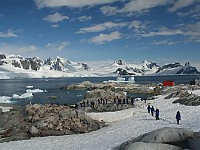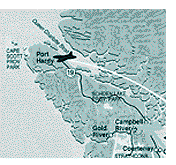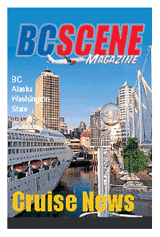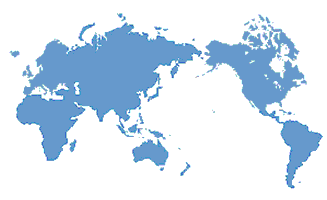|
ANTARCTICA: THE LAST UNSPOILED
WILDERNESS NO MORE
Date 24.O3.2013

Antarctica has hosted a century of expeditions and
exploration, from Roald Amundsen to modern races to the
South Pole. These visits have been popularized in books
and movies. Long the purview of scientists and
adventurers, Antarctica is seeing a new type of visitor
– the adventure tourist.
Tourism to Antarctica arguably started in the 1970s.
When a New Zealand airplane filled with tourists crashed
into Mt. Erebus and all 257 people on board were killed.
Tourism was halted for nearly a decade.
In the 1980s, about 2,000 visitors a year
arrived in Antarctica. A decade ago, most
tourists to Antarctica comprised of retirees resting on
cruise ship decks, watching the glaciers, penguins and
occasional whale. They rarely set foot on land. The few
who did go on land took pictures of the ice fields and
penguins.
They visited historic sites like old whaling stations or
research stations. McMurdo Station is the largest
settlement on the continent. It has been built to handle
up to 1,200 people. In contrast, New Zealand's Scott
Base only sleeps 90 people. They are scientific research
stations, but both sites host tourists and have gift
shops.
Tourism dropped in the years since the 2007 financial
market collapse, when the number of tourists peaked at
46,000. The number bottomed out at about 27,000
visitors. Cruise ships still pass through like the two
cruise ships that regularly visit Ross Island. About
9,900 visitors travelled through Antarctic waters last
year.
However, tourism has rebounded. Furthermore, the nature
of the tourism has changed. Tourists are coming onto
shore en masse. Flights over Antarctica resumed in the
1990s. And in a growing number of ventures, tourists are
scuba diving through the pristine waters and under ice,
driving across glaciers and even sky diving and
paragliding. You can now go water skiing off Antarctica
or take two and three person submarines into the frigid
waters. The submarines are owned by Henry Cookson
Adventures. However, most tourists stay on the 2% of the
continent that is ice free.
International Association of Antarctic Tour
Operators estimates that when the November through March
tourism season ends, about 35,000 people would have
visited Antarctica. Most tourists visit during
the 17 week long summer when the sun never sets. Even
more visitors are expected next year. In contrast, there
are only 4,400 researchers stationed at the 39 different
research facilities scattered across Antarctica.
Anywhere else in the world, so few visitors would be
described as a slow venue. On a place previously
untouched by humans, every visitor has a profound impact
on the otherwise unspoiled continent. Exotic species
have become a problem to ecosystems as diverse as the
coral reefs of the Caribbean to the rain forests of
Hawaii.
There are concerns that tourists could bring diseases or
seeds that could disrupt the fragile Antarctic
ecosystem. Then there are endless horror stories of
groups coming closer to animals than rules allow. Tim
Jarvis, an adventurer who recreated Ernest Shackleton's
journey, filed complex environmental impact statements
before making his journey. He is one of the few
adventurers to take such care before starting out on his
trip.
While the fifty countries that have signed onto the
Antarctic Treaty have decided to set rules to manage
tourism, only two rules have been agreed upon to date.
And as is often the case with international treaties,
neither rule is actively enforced.
Tourism has always had risks. Three skydivers above the
South Pole station died in 1997. Hypoxia is the most
likely cause of their deaths. However, hypoxia also
creates risks for all visitors to the ice shelf.
The South Pole is 9,300 feet above sea level, as high as
many mountains. Antarctica is dry, cold and windy. There
are many fatalities due to accidents caused by white out
conditions. The last known fatalities were in 2011, when
a yacht carrying three people disappeared during a
squall. These risks are magnified in a land that lacks
Emergency Rooms and ready evacuation to intensive care.
A 2004 agreement to require tourism operations to have
sufficient insurance to pay for rescue operations has
only been ratified by 11 nations. There have been
deaths. A Japanese crewman died in a shipboard fire in
2007. Searchers are often delayed until October to be
able to recover the dead, such as three Canadians who
died in January.
Human visitors also introduce risks to the
wilderness itself. Every ship is a possible oil
spill. In light of this hazard, the UN prohibited the
use of heavy fuel oil near Antarctica. This is one of
the two hard rules in Antarctica. Unfortunately, many
tour ships dump bilge water into the ocean. Plane
crashes cause both toxic chemical spills and a form of
litter. This is in addition to the noise pollution
ships, vehicles and even aircraft bring, affecting
everything from the penguins to the whales.
There is a proposal to limit ships to a maximum of 500
tourists, but only Japan and Uruguay support it. The
Polar Code would require all ships in the Antarctic to
be strong enough to withstand sea ice, but this standard
probably won't go into force until 2014.
The beauty of Antarctica is its rugged and pristine
vistas, wildlife and untamed and barely charted seas. It
is not surprising that so many want to see it
themselves. Yet we must do more to protect the land so
that it remains so, or Antarctica as the last unspoiled
wilderness will be no more.
July 16, 2013
CRISTAL
CRUISE TO RETURN TO ANTARCTICA AND CRYSTAL CRUISES
WINS T+L 18th WORLD'S BEST AWARD
Crystal Cruises is planning a magical
winter wonderland holiday with a new
Antarctica Christmas/New Year’s cruise.
In addition to three days sailing
Antarctic waters, the December 21, 2013
Buenos Aires-Valparaíso voyage aboard
the award-winning Crystal Symphony sails
through Argentina, Uruguay, Chile,
Falkland Islands, Drake Passage, Cape
Horn, and the Chilean Fjords, with
multiple excursions to the Antarctic
continent. Generous booking savings are
available until August 30 for the unique
voyage — the only one of its kind for
2013 and 2014.
All-inclusive cruise fares begin at
US$9,740/person for South America and
US$7,430/person for the Caribbean and
include US$600 and US$800 per person in
savings, respectively, if booked by
August 30.
Moreover, for a record 18th consecutive
year, Crystal Cruises was voted the
“World’s Best Large-Ship Cruise Line” in
the Travel + Leisure 2013 World’s Best
Awards readers’ survey. Recognized as a
T+L Hall of Fame winner, Crystal is the
only vacation experience – cruise line,
hotel or resort – to have been voted #1
every year since the awards’ inception.
Crystal Cruises’ 2013 World’s Best Score
of 90.10 is one of the line’s highest
ever scores.
Source:- Crystal Cruise
Airport
Information
Port Hardy, BC: Gateway to the Inside Passage and
Alaska
by
Jerry
W. Bird
 Port
Hardy, being the Northernmost city on Vancouver
Island, is a natural marine gateway to
the Inside
Passage, which is why the ferry to Prince Rupert is
such a popular option.
The
Inside Passage, geographically speaking, spans a
vast stretch of seacoast from Seattle to Siberia,
that's dotted with islands and awesome in its
beauty. There are the San Juan and Gulf Islands,
Queen Charlotte Archipelago and Aleutians for
starters, plus Vancouver Island, which is bigger
than many European
nations.
At
one time, our family considered the Inside Passage
an annual commute, heading 'outside' from Dawson
City, Yukon via Skagway and the Alaska Panhandle
ports of Juneau and Ketchikan, and Prince
Rupert. Port
Hardy, being the Northernmost city on Vancouver
Island, is a natural marine gateway to
the Inside
Passage, which is why the ferry to Prince Rupert is
such a popular option.
The
Inside Passage, geographically speaking, spans a
vast stretch of seacoast from Seattle to Siberia,
that's dotted with islands and awesome in its
beauty. There are the San Juan and Gulf Islands,
Queen Charlotte Archipelago and Aleutians for
starters, plus Vancouver Island, which is bigger
than many European
nations.
At
one time, our family considered the Inside Passage
an annual commute, heading 'outside' from Dawson
City, Yukon via Skagway and the Alaska Panhandle
ports of Juneau and Ketchikan, and Prince
Rupert.
 The
final stop en route to Vancouver was Alert Bay,
near Port Hardy on the Northern tip of the
biggest "Adventure Island" -the one named for
Captain Vancouver. The final stop en route to
Vancouver was a native community at Alert Bay, near
Port Hardy on the Northern tip of the biggest
"Adventure Island" -the one named for Captain
Vancouver. The
final stop en route to Vancouver was Alert Bay,
near Port Hardy on the Northern tip of the
biggest "Adventure Island" -the one named for
Captain Vancouver. The final stop en route to
Vancouver was a native community at Alert Bay, near
Port Hardy on the Northern tip of the biggest
"Adventure Island" -the one named for Captain
Vancouver.
Sail
from Port Hardy by Ferry
Pick any
direction - North to the fabled Haida Gwa'ii (Queen
Charlotte Islands) and Alaska; east to the Central
Coast and Cariboo Chilcotin; down Island to
Campbell River, west to Cape Scott and across the
seas to Asia Pacific ports. Port Hardy airport is a
stone's throw from the Inside Passage, and BC
Ferries offers sailings to Prince Rupert and the
Central Coast. As Northern terminus of the new
Island Highway, Port Hardy is home base for a
variety of circle tours, like the one we enjoyed
this summer. For flight- seeing, few vistas compare
with the 45 minute Port Hardy jaunt, along the
Inside Passage, soaring with an eagle's eye, as the
Princess Love Boats glide by, and whales frolic
beneath our wings.

Coho
Country:
Port Hardy
is where mining and logging history was made. A
local event, "Fi-lo-mi Days," salutes the big three
money earners; fishing, logging and mining. Known
as "Coho Country", Port Hardy is famous for superb
salmon fishing, and fresh water lakes and rivers
where steelhead thrive. Mayor Hellburg showed us
the new sea walk along the harbor, next to a large
marina, which attests to the size of the local
sports fishing industry. Over 400 charter boats
operate from this scenic port . Whale watching is a
huge draw; pods of whales travel through Johnstone
Strait daily, to feed, and to visit special
beaches, where they sink to the ocean floor and rub
against rounded stones.
History and
Cultural Heritage
A short ferry ride
from Port McNeill takes you to Alert Bay on
Cormorant Island, with the U'mista Cultural
Center's treasure of aboriginal potlatch artifacts,
one of the world's tallest totem poles, traditional
Big House, the 'Namgis Burial Grounds-site of
memorial and other Totem Poles, Alert Bay
Library-Museum, Alert Bay Ecological Park, century
old Anglican Church, ect. Another ferry serves
Sointula, a Finnish fishing village on Malcolm
Island. Check out Cape Scott Wilderness Trail,
North Coast lighthouses, the old whaling station,
Stories Beach, salmon farms, Quatse River Nature
Trail and Port Hardy Fish Hatchery. For native
culture, there's the Kwakiutl Long House, Indian.
Other nearby place names include Sayward, Woss,
Nimpkish, Zeballos, Fair Harbor, Cape Scott, Coal
Harbor, Winter Harbor and Port Alice. Locating a
business or buying a retirement home? You'll find
serviced land a fraction of the cost of similar
property on Southern Vancouver Island or BC's Lower
Mainland. Port Hardy Airport Information:
250-949-6424, fax 250-949-9013.
Update courtesy of Norine Charlie, Manager
Alert Bay Visitor Info Centre
116 Fir Street, Bag Service 2800, Alert Bay, BC,
V0N 1A0
Phone: (250) 974-5024, Fax:
(250) 974-5026
email: info@alertbay.ca
, web:
http://alertbay.ca
Port
Hardy to Bella
Coola,
Central Coast and Cariboo- Chilcotin on BC Ferries
Discovery Coast Route.
I
call them the "Adventure Islands," because the
North Pacific coast and archipelago have long been
a magnet for adventurers and soldiers of fortune,
including my father, who left the family's Seattle
home for a post with the Royal Canadian Mounted
Police at Dawson City in the far Klondike. As for
the Inside Passage, the Yukon's poet laureate,
Robert Service, captured its majesty in his 'Songs
of a Sourdough', Jack London immortalized it in
Call of the Wild, and Pierre Berton chronicled it
in his book Klondike.
The
second world war, brought adventure of a different
sort, when for a time, enemy troops were dug in on
the Aleutian Islands, submarines lurked offshore,
and balloons carrying fire bombs threatened our
forests. To combat this ominous situation, the
mighty Alaska Highway system was built in 1942 - a
threefold effort involving links by land, sea and
rail. I had the privilege of documenting that part
of our history, when I was commissioned by the
Canadian Government to produce a video for the
Alaska
Highway's
50th
Anniversary
.BC
Nature-Ecology:
BC
and the Yukon combines the geography of many lands,
from desert to seacoast and alpine meadows. Its
native culture goes back thousands of years. Photo:
Ken Bird, Calgary.
Port
Hardy Links:. http://PortHardyLinks.com
.
http://VancouverIslandLinks.comnteractive
http://www.just-alaska-cruises.com/
|



